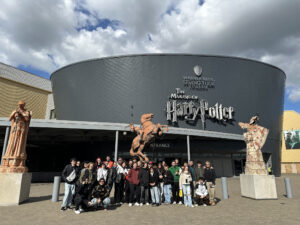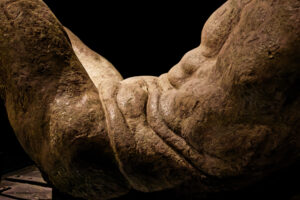In this article, you will explore the fascinating world of contemporary art, discovering how to interpret it beyond first impressions. We will guide you through the main currents, innovative techniques and hidden messages that artists wish to communicate. You will learn to recognise the different elements that make up this art, thus enriching your understanding and appreciation of works that often escape superficial analysis.
The essence of contemporary art
Definition and characteristics
Contemporary art represents a set of emerging artistic practices that reflect the socio-cultural realities of today’s world. Its distinctive features include the variety of mediums used, from installations to video, and an often interdisciplinary approach that breaks down traditional barriers. Provocative works and innovative concepts invite critical reflection, allowing an immediate connection with the viewer.
Evolution through the ages
Contemporary art has evolved considerably, reflecting the social, political and technological changes of the 20th and 21st centuries. From the emergence of Dadaism and Surrealism, which challenged artistic conventions, to the emergence of movements such as Conceptual Art and Minimalism, each era has influenced the modes of expression and themes addressed, maintaining an active dialogue with contemporary society.
In the 1960s and 1970s, artists such as Andy Warhol and Joseph Beuys expanded the boundaries, incorporating elements of mass consumption and activism into their work. With the advent of digital technology in the 1990s, art diversified further, giving rise to new forms such as new media art. Each stage of your exploration of contemporary art reveals complex dialogues with everyday experiences and the cultural landscape, making historical context crucial to a full understanding of the works. This continuous flow of innovation invites you to consider art not only as an aesthetic object, but as a reflection of the human condition and evolving society.
Visions and Interpretations
The visions and interpretations of contemporary art are multiple and often conflicting. Each work invites a personal reading that reflects the experiences and emotions of the viewer. Installations and performances challenge customary conventions, pushing you to explore meanings beyond the immediate. Subjectivity plays a key role, turning every gallery visit into an opportunity for personal exploration.
Critical approaches
When analysing contemporary art, different critical approaches emerge, from formalism to post-structuralism. These methods allow you to navigate works by considering elements such as form, social context and the artist’s intentions. Each approach requires a thorough understanding of cultural dynamics and historical influences, offering a lens through which to evaluate the work.
Commentaries and reflections by artists
Artists’ commentaries and reflections offer unique perspectives on contemporary art, revealing creative processes and underlying motivations. Many artists share their experiences through interviews and written statements, allowing you to enter their minds and grasp the challenges faced during creation. These insights not only enrich your understanding, but can also stimulate a personal dialogue with their work.
Commentaries by artists, such as Marina Abramović or Damien Hirst, frequently return to themes of vulnerability and provocation. Abramović, for example, examines the connection between spectator and performer, while Hirst prompts reflection on mortality through bold works. These testimonies invite you to consider the emotional message and meaning behind the work, making the art experience even more engaging and personal.
The impact of technology
Technology has revolutionised the contemporary art scene, influencing not only the materials and techniques used, but also the way works are enjoyed and shared. New digital platforms allow artists to reach a global audience, while art is evolving to reflect the challenges and opportunities offered by the digital world. Innovative tools such as augmented reality and 3D printing offer unprecedented possibilities for expression, completely transforming the very essence of the work of art.
New media and forms of expression
New media such as video, digital photography and multimedia installations offer artists a wide range of expressive forms. These tools not only enrich the visual experience, but also stimulate new reflections on issues of modernity and society. For example, the use of video as an artistic medium has led to a more dynamic and engaging narrative, allowing complex concepts to be explored through a visual lens.
Virtual and interactive art
The growing popularity of virtual and interactive art allows viewers to be not just observers, but co-creators of the art experience. Through immersive applications and installations, the audience can interact with the works, influencing their form and meaning. This challenges traditional boundaries between artist and viewer, creating an active and engaging dialogue that redefines the concept of art.
The role of the audience
The audience is not just a spectator in contemporary art; it plays a fundamental role in the interpretation and appreciation of the works. Its presence and reaction can transform a passive experience into an active dialogue. Today, artists try to involve the audience, inviting them to participate and contribute to the narrative of each work, thus creating a deep and personal connection.
Participation and interaction
Audience participation occurs through concrete actions and emotional reactions, making art a shared experience. Events such as performances, workshops and interactive installations encourage engagement, allowing you to become an integral part of the creative process. This leads to an inclusiveness that enriches the artistic vision and promotes an ongoing dialogue between artists and spectators.
Criticism and engagement
Criticism plays an essential role in audience engagement with contemporary art. It is not just about passing judgement on a work, but about stimulating reflections that can influence your perception. Constructive criticism can nurture a deeper dialogue and invite you to explore more complex meanings and concepts, thus creating a personal and emotional connection with the work.
In the context of engagement, criticism offers valuable insights into the artist’s intentions and reactions to the work. Publications, blogs and even social media have amplified this interaction, where your opinions can be shared in real time. This exchange not only enriches your experience, but also that of others, creating a community of thought around contemporary art, where every voice counts and every interpretation is valid.
Art and Society
Contemporary art reflects and criticises current social dynamics, becoming a powerful mirror of the society in which we live. Through its various forms and practices, art addresses issues of identity, social justice and human rights, inviting the viewer to deep reflection and active interaction with contemporary issues. Art thus becomes a means to explore and challenge power structures and cultural tensions.
Social issues in contemporary art
Social issues are at the heart of contemporary art, addressing issues such as immigration, racism and gender inequality. Artists such as Ai Weiwei and Banksy use their works to raise public awareness of these pressing issues, creating works that provoke an emotional reaction and prompt critical reflection. In this context, art becomes a platform to give voice to those who are often not heard.
Art as a tool for change
Art can transform social discourse, stimulating concrete action and political change. Through exhibitions, installations and performances, artists and art collectives bring injustices and forgotten issues to light, encouraging the public to actively participate in the debate. Observation is no longer enough; involvement becomes a necessity to initiate real change.
Projects like Theaster Gates’ Dorchester Projects demonstrate how art can regenerate entire communities, addressing social problems through collaboration and inclusion. Through public space, art becomes a form of activism, creating dialogues between different cultures and segments of the population. This approach not only enriches the artistic experience, but also creates the opportunity for authentic social involvement, conveying the message that change is possible and necessary.
Concluding reflections
The complexities of contemporary art require analysis well beyond the surface. Understanding the historical, social and political context of the works allows you to appreciate the artists’ intent and the message they wish to convey. With a critical and informed approach, art reveals itself as a powerful tool for reflection and dialogue, inviting you to explore deeper questions about identity, culture and change. Contemporary art is, therefore, a continuous evolution, reflecting our changing society.
Future trends
The future of contemporary art is full of experimentation and innovation. Hybrid forms combining digital and traditional technologies are emerging, creating new ways of interacting with the public. Artists from different disciplines are collaborating, blurring the boundaries between visual art, music and performance, while the focus on social and environmental issues continues to grow, directing the artistic narrative towards a more inclusive and aware world.
Sustainability in contemporary art
Sustainability plays a central role in contemporary art, influencing both the materials used and the messages conveyed. Artists are exploring recovery and reuse techniques, favouring the use of ecological and renewable materials to reduce the environmental impact of their works. Public art projects increasingly address climate issues, stimulating the public to reflect on their own behaviour and collective responsibility towards the planet.
In this era of increasing environmental awareness, various artistic initiatives emphasise the need for radical change. Artists such as Olafur Eliasson, through works that dialogue with natural elements, invite you to consider the urgency of climate action. Installations using biodegradable or recycled materials, such as those by Andrea Zitt, demonstrate not only an artistic commitment, but also a clear message for a sustainable future. These approaches not only beautify public spaces but also promote an impactful discourse on contemporary ecological challenges.
Conclusion
In this article, you have discovered how contemporary art challenges your perceptions and invites you to question deeper meanings. Through critical analysis, you can now navigate the complex artistic landscape, recognising the wealth of emotions and stories that each work can tell. Developing your critical eye will enable you to further appreciate the nuances and innovations of this fascinating field of art.



